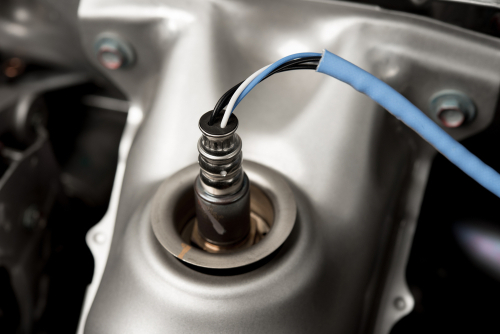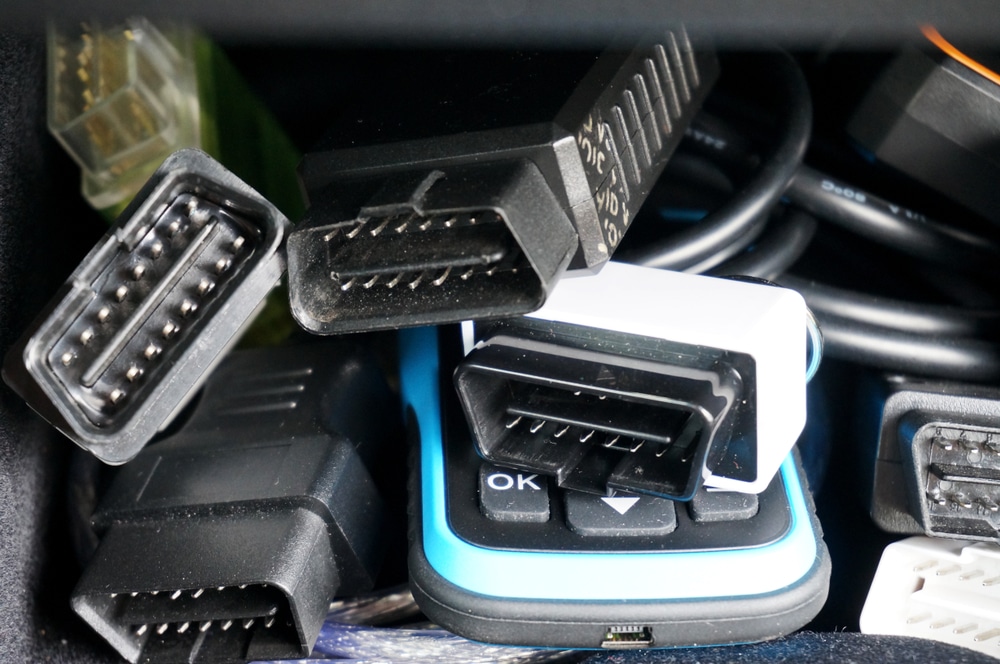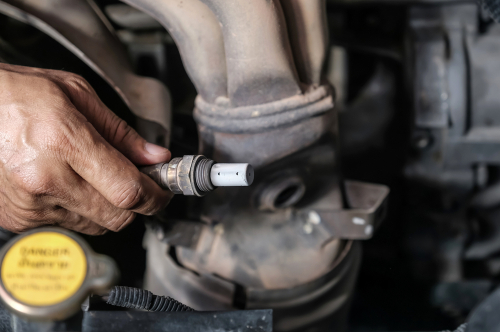
The P0131 code is an OBD-II diagnostic trouble code that indicates low voltage in the Opel Cascada’s Oxygen (O2) sensor circuit for Bank 1, Sensor 1 (B1S1).
This sensor plays a crucial role in maintaining optimal engine performance by detecting the air-fuel ratio in the exhaust, then sending this data to the Cascada’s engine control module (ECM).
A damaged or faulty oxygen sensor is the primary cause of this code.
If the sensor’s voltage remains low for longer than two minutes, the ECM (Engine Control Module) interprets it as a low voltage condition, triggering the P0131 code and illuminating the malfunction indicator light (MIL).
Understanding the P0131 OBD II Code
Opel Cascada P0131 Definition
O2 Sensor Circuit – Low Voltage – Bank 1 Sensor 1
P0131 is a generic (has the same meaning for all vehicles manufactured after 1996) OBD-II trouble code that indicates a low voltage signal from the oxygen sensor 1 on engine bank 1.
Oxygen Sensors

Oxygen sensors play a crucial role in your Cascada’s engine performance. They are responsible for measuring the amount of oxygen in the exhaust gases. This information is then used by the ECM to adjust the air-fuel mixture for optimal combustion, ensuring the best possible fuel economy and minimizing harmful emissions.
Sensor Circuit (Low Voltage)
The sensor circuit refers to the electrical connections and wiring associated with your Opel Cascada’s oxygen sensors. Each oxygen sensor has its own circuit that’ll have a corresponding code if there’s low voltage.
P0131 indicates that your Cascada has low voltage on the B1S1 O2 sensor circuit.
Bank 1 Sensor 1
Modern vehicles have multiple oxygen sensors, including:
- Pre-catalytic converter sensors: These are usually referred to as “Bank 1 Sensor 1” or “Bank 2 Sensor 1.” Their primary responsibility is to monitor how your Cascada’s engine is running.
- Post-catalytic converter sensors: Also known as “Bank 1 Sensor 2” or “Bank 2 Sensor 2.” These O2 sensors monitor your car’s emissions output and aren’t as critical to the performance of the engine.
“Banks” represent a side of the engine (Bank 1 is the side with the first cylinder, Bank 2 the second cylinder side).
Symptoms and Causes of P0131 Code
When driving your Opel Cascada you may not notice any visible symptoms when encountering a P0131 code, except for the illuminated MIL on your dashboard.
However, prolonged driving with this issue can lead to rough engine performance, black exhaust smoke, poor fuel economy, and even difficult starting.
Common Symptoms
When your vehicle has a P0131 OBD-II code, you may experience some or all of the following symptoms:

- Engine light: The “Check Engine” light or “Service Engine Soon” light will be illuminated on your Cascada’s dashboard, indicating an issue with your car.
- High fuel consumption: Your car may consume more fuel than usual due to the inefficient air-fuel mixture.
- Excessive smoke from exhaust: You may notice an increase in smoke coming from your Cascada’s exhaust, which is caused by incomplete combustion.
- Poor performance: Your vehicle may exhibit a noticeable lack of power, hesitation during acceleration or overall poor engine performance.
- Hard starting: You may have difficulty starting your vehicle, especially when it’s cold.
P0131 Causes: Opel Cascada

There are several potential causes for the P0131 code, some of which include:
- Failed Oxygen sensor: A damaged or faulty oxygen sensor can be the primary cause of this code.
- Unplugged or damaged wiring: Wiring that has become unplugged or damaged can result in improper reading from the oxygen sensor circuit.
- Open or short circuit: An open or short in the oxygen sensor circuit can cause the P0131 code to appear.
- Improperly reading coolant temp sensor: If the coolant temperature sensor is not reading correctly, it can affect the oxygen sensor reading.
- Failed heater circuit: A failure in the oxygen sensor’s heater circuit can cause the P0131 code to appear.
Diagnosing P0131 Trouble Code
Diagnosis Procedure
There’s a lot you can do at home to determine the cause of P0131 in the Opel Cascada at home.
Using an OBD2 Scanner

Freeze Frame Data
The freeze frame data captured by your vehicle’s Engine Control Module (ECM) can provide valuable context for the P0131 trouble code’s possible causes.
The data includes information like coolant temperature, engine speed, and throttle position at the moment the code was triggered. Analyze the freeze frame data to identify possible patterns or trends, which may help you pinpoint the specific issue you need to address.
Swap Test

If your Cascada has a “V” type engine with two cylinder heads, you can swap the bank one and bank 2 O2 sensors. They’ll be on or near the end of the exhaust manifolds.
Next, clear the codes with a code scanner. If the code changes to P0151 (which indicates low voltage at the B2S1 sensor), it has effectively jumped to the other side, which indicates the Oxygen sensor that is now on bank 2 is bad.
Coolant Temp Sensor
A malfunctioning or improperly reading coolant temp sensor can contribute to the P0131 trouble code in the Opel Cascada, as it can affect the oxygen sensor’s performance.
Using your multimeter, test the coolant temp sensor’s resistance to ensure it’s operating within the prescribed range. If necessary, replace the sensor or repair any associated wiring issues.
Repairing and Preventing P0131 Code

Repair Steps
To repair the P0131 in your Opel Cascada, follow these steps:
- Clear the codes: Clear any codes in your vehicle’s Powertrain Control Module (PCM) and test-drive to see if they return.
- Monitor the O2 sensor: If possible, livestream the data from the PCM to keep an eye on the voltage and resistance coming from the O2 sensor.
- Inspect the sensor: Check the oxygen sensor for damage, wear or corrosion. If it appears faulty, replace it.
- Check the wiring: Inspect the wiring and connectors for any signs of damage or wear. Repair or replace as necessary.
- Scan for additional codes: If the code persists, look for any additional fault codes that could be triggering the issue.
Common Repair Mistakes
Avoid misdiagnoses by being aware of these common pitfalls when repairing P01331 in the Opel Cascada:
- Ignoring other codes: Make sure to address any other codes that might appear alongside the P0131 code.
- Overlooking wiring issues: Damaged wiring or connectors can cause the P0131 code; don’t assume the sensor itself is the issue.
- Replacing the wrong O2 sensor: Bank 1, Sensor 1 refers to the specific O2 sensor that’s causing the problem. Be sure you’re working on the right one.
Frequently Asked Questions
Can I drive with P0131?
You can drive your Cascada with a P0131 code for a short period of time. However, extended driving with this code may cause internal engine damage.
It is recommended to get the issue fixed as soon as possible to avoid damage to the emission system and catalytic converter. If the check engine light is flashing, don’t drive your car at all.
Causes of low voltage oxygen sensor?
The causes for a low voltage oxygen sensor include a failed oxygen sensor, damage or unplugged wiring, open or short circuits, an improperly reading coolant temperature sensor, and a failed heater circuit for the oxygen sensor.
Bank 1 sensor 1 location?
Bank 1 sensor 1 refers to the oxygen sensor located on the side of the Opel Cascada’s engine that contains cylinder 1. In a V or inline configuration, this sensor is typically found on the exhaust manifold or the exhaust pipe before the catalytic converter.
P0131 vs P0151 code
P0131 refers to a low voltage issue with the O2 sensor circuit in Bank 1, Sensor 1. P0151, on the other hand, refers to a low voltage issue with the O2 sensor circuit in Bank 2, Sensor 1.
Both codes indicate a problem with the oxygen sensor, but they differ in the specific bank and sensor they refer to. Check and repair the appropriate sensor and wiring for each code.
Good luck diagnosing P0131 in your Opel Cascada.

